Information System Enterprise Architecture Design Academics at XYZ School Using TOGAF ADM
on
JITTER- Jurnal Ilmiah Teknologi dan Komputer Vol. 4, No. 3 December 2023
Information System Enterprise Architecture Design Academics at XYZ School Using TOGAF ADM
Putu Widiadnyanaa1, Putu Veda Andreyanab2
aSTIKOM BALI Institute of Technology and Business bInformation Technology Study Program, Udayana University, Indonesia e-mail:1widiadnyana@stikom-bali.ac.id, 2putuveda@unud.ac.id
Abstrak
Sistem informasi membantu segala proses dalam suatu organisasi maupun sekolah menjadi lebih mudah dan efisien. Namun, penerapan sistem informasi akademik di sekolah bukanlah sesuatu hal yang mudah untuk diterapkan. Penerapan sistem informasi di sekolah membutuhkan perencanaan yang matang dan terstruktur sehingga menghasilkan rancangan yang sesuai kebutuhan, tujuan dan maksud sekolah tersebut. Perancangan Enterprise Architecture dapat dilakukan dengan menggunakan framework agar memudahkan perancangan. TOGAF (The Open Group Architecture Framework) digunakan untuk membuat perancangan Enterprise Architecture sistem informasi akademik yang terdapat proses bisnis dan kegiatan akademik di sekolah. Perancangan meliputi fase-fase TOGAF ADM (Architecture Development Method) dengan tahapan kajian literatur, pengumpulan data, premilinary, architecture vision, business architecture, information system architecture, technology architecture, opportunities and solutions, dan migration planning. Hasil dari perancangan akan memperoleh sebuah sistem informasi yang dapat menghubungkan beberapa proses bisnis yang ada pada sekolah XYZ. Hasil dari perancangan ini berupa blueprint yang digunakan untuk mempermudah proses bisnis pada sekolah.
Kata kunci: Enterprise, Architecture, Sistem Informasi, TOGAF ADM
Abstract
Information systems help all processes in an organization or school become easier and more efficient. However, implementing an academic information system in schools is not something that is easy to implement. Implementing information systems in schools requires careful and structured planning to produce a design that suits the needs, goals and objectives of the school. PlanningEnterprise Architecture can be done by using a framework to facilitate planning. TOGAF used to make plansEnterprise Architecture academic information system which includes business processes and academic activities at school. The design includes the TOGAF ADM phases with the stages of literature review, data collection,premilinary, architecture vision, business architecture, information system architecture, technology architecture, opportunities and solutions, and migration planning. The results of the design will obtain an information system that can connect several existing business processes at XYZ school. The results of this design are:blueprint which is used to simplify business processes in schools.
Keywords: Enterprise, Architecture, Information systems, TOGAF ADM
The school is dedicated to providing the best education for students. One way that can be used is to integrate all school components using information technology. Schools have the desire to continue to improve their quality while also requiring the integration of information technology. Integrating information technology or information systemsup to date can help grow a business and reduce the time it takes to complete a transaction. Integration of information technology and information systems will be beneficial if it runs in accordance with the vision and mission. Management of information resources must be carried out byenterprise architecture which will provide an accurate long-term decision-making framework for considering the interests of the School as a whole.
Enterprise architecture is the process by which an organization designs systems to support technology and business needs in realizing its mission and vision and achieving desired results. An information system is a collection of components that will process data into information in order to
achieve a purpose or objective. Development of information systems andenterprise architecture It should be done carefully and well planned, and aligned with what the organization needs. Careful design will also be very useful for the development of information systems and company architecture, from several perspectives such as budget, organizational or agency readiness, and human resources when implementing the plan.
The TOGAF ADM framework will be used in planningenterprise architecture to support business processes at the School. The aim of this research is to createblueprint Academic Information System to support information system needs. The problem formulation in this research is how to design data architecture, applications and technology that is appropriate to the function of the Information System. It is hoped that this research can also provide design suggestions for developmententerprise architecture and information systems in schools.
Data collection methods are techniques or methods used to obtain data as research material. Data collection in this research was carried out through observation and documentation activities. Further explanation regarding the data collection method used is as follows.
The first data collection method is by observing. Observation is a way of collecting data using or based on personal observations of the object to be studied and then recording the data according to initial planning. The recorded data is expected to be in sync with research needs, for example observations related to how academic business processes occur at a school.
The third data collection method is by carrying out documentation. Documentation is carried out in the sense of collecting data from various reference sources such as journals, books, archives, official documents, and other related matters.
This research uses TOGAF ADM as a method and framework for designEnterprise Architechtur Planning on the school academic information system. The Open Group Architecture framework (TOGAF) is a framework for enterprise architecture that provides a comprehensive approach to planning, designing, and implementing enterprise information architecture.
TOGAF provides a detailed method description of how to build, manage and implement frameworks and information systems used to draw an enterprise architecture development model so that it can be used as a recommendation in developing an integrated and valuable system. ADM is defined as a general method that contains a set of activities used in modeling architectural developmententerprise. This process can also be used as a guide or application for planning, organizing, building and implementing information systems for organizations. The research method in this study can be seen in Figure 1 below.
Requirement Management
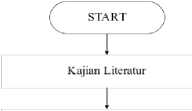
Pengumpulan Data
Preluninary phase
Architecture Vision
Business Architecture
I
Information System Architecture
ZZ
Technology Architecture
ZZ
Opportinuties and Solution
Migration Planning

Figure 1. Research Method
-
1) Preliminary is the phase of collecting vision and mission and business planning in academics in building academic information systems. This phase is carried out by collecting several documents from ongoing academic studies.
-
2) Achitecture is a phase for analyzing documents contained in academic business processes. This is done in order to have a clear reference regarding the objectives of designing an academic information system. In this phase it is also createdsystem requirements for the development of academic information systems.
-
3) Business Architecture is a phase for designing the Value Chain and BPMN which is based on the academic documents that have been obtained as well as the activities and business processes contained in the school.
-
4) Information System Architecture is the phase for carrying out design usingclass diagram, so that it is clear which data entities will be used for relationships between data entities. The data architecture that has been designed is continued with application design using ituse case diagram, so that the process flow is clear for use in supporting academic business processes and data architecture.
-
5) Technology Architecture is the phase of designing computer networks and infrastructuredisaster recovery to support the implementation ofinformation system architecture.
-
6) Opportunities and Solution is a phase in evaluating and selecting options for implementation, strategizing implementation and planning implementation.
-
7) Migration Planning is a phase for planning the transfer process from the old system to the new system, so that the implementation of the academic information system that is created will run well and be directed.
Enterprise architecture was introduced in the 1980s which started from problems that occurred in system architecture. The problems that occur recognize the scope of the design and the level of complexity in the implementation of information systems which is increasing and expanding, so that a logic (architecture) is needed that can control and define interfaces by integrating all components in the system [8]. Enterprise Architecture is a description of the stakeholder's vision and mission in the form of information, functionality/usability, organizational location and performance measures aimed at developing a system or set of systems [15]. EA is a method used to design and realize organizational structures, business processes, information systems and infrastructure.
The Open Group Architectural Framework or commonly called TOGAF is a framework that explains the rules for developing enterprise architecture principles using detailed tools and methods to implement them [14]. This enterprise architecture framework was designed based on "The Technical Architecture Framework for Information Management (TAFIM)" by the United States Department of Defense. The TOGAF framework was adopted by the Open Group in the mid-1990s. The first TOGAF specification was launched in 1995 and TOGAF 8 (Enterprise Edition) was released in 2004. Currently there is TOGAF 9 which complements the previous version [11]. TOGAF is a detailed framework and set of supporting tools for developing enterprise architecture. All developing organizations use it freely to design, evaluate, and build enterprise architecture. The phases in Togaf can be seen in Figure 2 below.
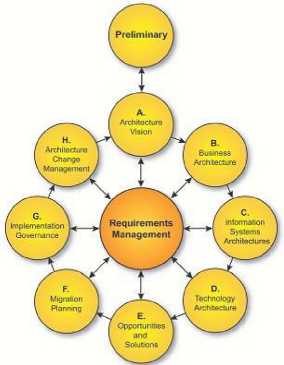
Figure 2. TOGAF ADM phase
-
4. Results and Discussion
-
4.1 Preliminary Phase
-
SMP ABC currently has several software and applications to process business process data. SMP ABC has used software technology as an operating system, security, email processing software programming language software, and other processing software.
Table 1.Utilization of ICT
|
No. |
Utilization of ICT |
Information |
|
1. |
Data processing |
Useoffice software, likeword, excel, andpower point. Most data is in the form ofhardcopy (printed) and some open insidesoftcopy |
|
2. |
Operating system |
Windows |
|
3. |
Processor |
Intel Core i5 |
|
4. |
Input Tools |
Keyboard and Mouse |
|
5. |
Print Tools |
Printer Epson L360 |
Table 1 above has defined that information system development focuses on managing Academic Information Systems usingwebsite. This is so that data processing can be done more quickly.
Identification of current conditions leads to academic functions in schools. The school academic business function that will be explained in this explanation is the academic business
function at XYZ school which refers to national education standards. The following business functions can be decomposed into subfunctions.
-
a) Implementation of the curriculum.
-
b) Determination of the school organizational structure.
-
c) Determination of the educational calendar.
-
d) Determination of learning syllabus documents.
-
e) Determining the average KKM for lesson gem students.
-
f) Determining the learning implementation plan.
-
g) Determination of goals and teaching methods.
-
h) Determining learning resources.
-
i) Determination of teaching materials/materials.
-
j) Controlling the ratio of the number of educators and students.
-
k) Preparation of subject practicum schedules.
-
l) Implementation of outing class.
-
m) Monitoring and supervision of the learning process.
-
n) Determining student majors.
-
o) Subject schedule management.
-
p) Preparation of reports on educational management evaluation results.
-
q) Determination of remedial and enrichment programs.
-
r) Assessment of learning outcomes by educators (report cards).
-
s) Assessment of learning outcomes by educational units (UN).
Phasearchitecture vision will explain the basics of information system design including the vision, mission and goals of the organization. These three things will become the basis for forming an architectural vision.
To become a leading school in the field of information and communication technology that is based on morals and entrepreneurship.
-
a. Providing quality advanced education in the field of information and communication technology in order to increase the nation's competitiveness.
-
b. Creating academic conditions that support the implementation of national research activities for the benefit of the academic community and the nation.
-
c. Carrying out charitable activities as a form of institutional social responsibility.
-
d. Collaboration with various institutions at home and abroad.
-
e. Developing campus organizational institutions to meet various changing needs as technology develops.
-
a. A school with graduates who are faithful, devout, competent in science, technology and arts (IPTEKS), honest, visionary, disciplined, creative, innovative, responsible and independent.
-
b. Creating an intelligent, prosperous and competitive society.
-
c. Develop and disseminate science and technology nationally and internationally.
-
d. Implementation of planned and reliable management
-
e. The architectural vision functions to develop an integrated vision of industry needs so that the organization can achieve its goals and determine the infrastructure that is being developed. Based on the school's vision, mission and general objectives for its academic business processes, it can be concluded that the architectural vision of the school's academic information system is as follows.
-
a. The school academic information system architecture becomes the basic design when the information system is created. Information system architecture functions as a supporter of main academic activities which were initially conventionalby system. The objectives of this information system architecture are as follows.
-
b. Providing facilities means providing services required by the academic community, stakeholders and related academic parties in a satisfactory, reliable and affordable manner. The services provided must be based on the expectations of the users who will use the system.
-
c. Doupgrade on sustainable quality services in accordance with the Education mission
-
d. Information systems must be able to provide accurate information both from inside and outside the institution and vice versa effectively and efficiently.
The aim of the second information system architecture is to provide information system units. These information system units will be managed individually by each unit and integrated with the main information system at the school. The existence of information system units aims to ensure that each field or division or unit in the school has its own rights and authority in carrying out its respective business processes.
The second goal of information system architecture is regarding access rights. The school academic information system must be accessible to all academics and stakeholders according to their respective levels of needs, roles and knowledge. Developmententerprise architecture in educational institutions, especially schools, based on a review of the educational agency's objectives and character, methods are needed in information systems that are as follows.
-
a. Has generic properties
-
b. Information systems can unite artifacts with different standards
-
c. Implementation can be done easily
-
d. Keep up with technological developments so that you are not vulnerable to change
-
e. Information systems have benchmarks and controls in determining the level of success for IT implementationGovernance.
The preparatory and initiation activities required to comply with enterprise architecture business policies include defining the organizational architecture framework and defining principles. As a school that requires an information system architecture using the TOGAF framework, it must also ensure a level of visibility and control direction. The information system must conform to the framework and support all architectural requirements. In particular, increased visibility into lower-level decision making allows a degree of oversight of decisions having strategic consequences for the organization.
This Business Architecture stage carries out architectural modeling of the business process stages that are directly related to the service area. At this stage, the business process flow that is currently running and that will be proposed is identified using Business Process Mapping Notation (BPMN). The business processes consist of main activities and supporting activities.
Value Chain Analysis is a step taken to formulate a list of the school's main and supporting business functions. Modeled in the form of a business process with the aim of defining the functions and services that exist in each business function. Analysis resultsvalue chain can be seen in picture 3 as follows.
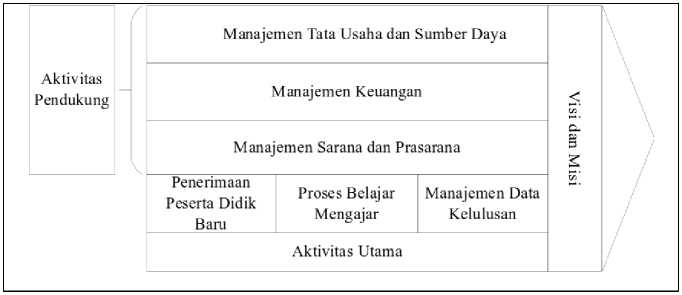
Figure 3. AnalysisValue Chain
There are two parts to the business process carried out, namely main activities and supporting activities.
-
1) Main Activities
-
a. Teaching and Learning Process Program
This process focuses on academic management which is the most important activity. An overview of the Academic or teaching and learning process business process is as follows.
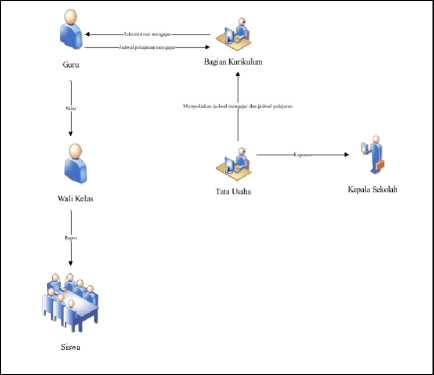
Figure 4.Business Processes for Academic Operational Activities
-
b. Acceptance of New Students
This activity consists of receiving and managing student data: student name, NIS, NISN, gender, class or major, parents' names, address and telephone number. An overview of the new student admissions business process can be seen as follows.
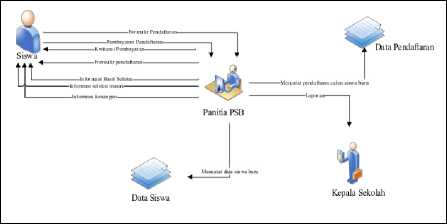
Figure 5.New Student Admission Business Process
-
c. Graduation Data Management
This process includes making diplomas, awarding diplomas, managing data on students who are about to graduate. An overview of the business process for graduation data management is as follows.
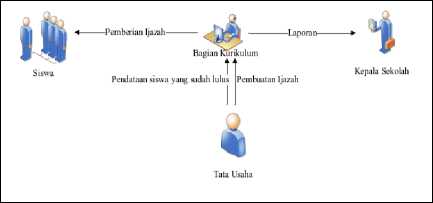
Figure 6.Graduation Data Management Business Process
-
2) Supporting activities
-
a. Administration and Resource Management
These activities include the management of school administration, activities related to meeting human resource needs as well as the allocation of human resources in accordance with their respective duties in academic operational activities which include:
-
1. HR Planning
-
2. HR Recruitment
-
3. Human Resource Development and Development
-
b. Financial management
Financial management is a part of financial management which includes:
-
1. Budget planning
-
2. Budget determination
-
3. Student payment administration
-
4. Financial responsibility report
-
c. Facilities and Infrastructure Management
Facilities and Infrastructure Management is an activity for managing facilities and infrastructure for academic activities and supporting non-academic activities.
This stage carries out the architectural design of the XYZ school academic information system, by building a data architecture from detailed tables of data entities.
Table 2.Data Entity Details
|
Candidate Entities |
Entity |
|
Acceptance of new students |
|
|
Teaching and learning process |
|
|
Graduate data management |
|
|
Administrative management |
|
|
Facilities and infrastructure management |
|
|
Financial management |
|
In the technology architecture phase, technology will be identified against the use of current technology in directly observed applications so that new technology proposals can be planned.
Effective and efficient use of information systems requires schools to also use good computer networks to support business processes in schools which consist of local networks. The local network will be connected to an internet networkprovider which is available in the city where the school is located. As for the equipmenthardware andsoftware currently are as follows
-
a. Personal computer
-
• Memory capacity is 4 GB
-
• Capacity hard drive minimal 500GB
-
• Processor: Intel core i5
-
• Operating System: Windows 10
-
b. Printer
-
• Printer Desk Jet series 1515
-
c. Computer network infrastructure and technology
-
• Mikrotik RB 1100
-
• Access Point D link
-
• Provider: Telkom
-
• Bandwidth: 100 Mbps
-
• Switch
-
• AND
The computer network at the school functions as a telephone network connection from Telkom. The current computer network topology is shown in figure 7 below.
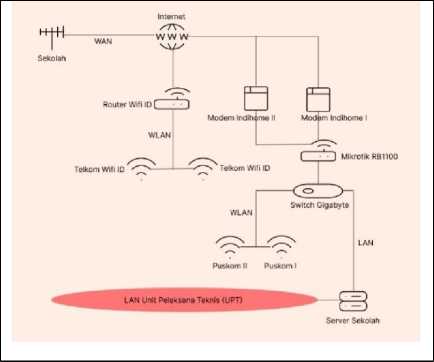
Figure 7.Current Network Topology
The level of gap or Gap analysis carried out is the result of information system planning to achieve goals that can be achieved. The technology architecture gaps are shown in the table below.
Table 3. Information Technology Architecture GAP Analysis
|
No |
Current Technology Architecture |
Input |
Target Information Technology Architecture |
|
1 |
Have a computer as a server for the built system. |
Planning for server procurement with specifications according to needs. |
Have a server asdatabase and a place to process operational data. |
|
2 |
There is no infrastructuredisaster recovery. |
Planning infrastructuredisaster recovery. |
Data and network security is more guaranteed. If there is a problem with the main network, you can use a backup network. |
In an effort to support various school functions, it can be proposed to design a computer network withcloud computing by usingprivate cloud computing SaaS method. The proposed topology uses a bus topology, namely by addingprivate cloud server. Usageprivate cloud server can increase school network capacity and provide benefits in exchanging data between fields. The proposed topology can be seen in Figure 8 below.
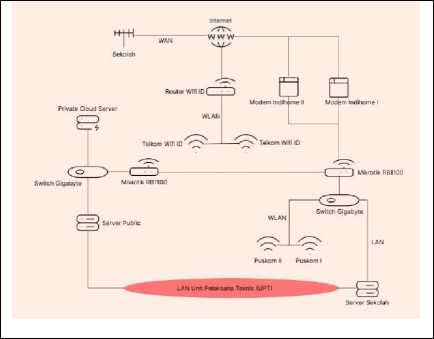
Figure 8.Proposed Computer Network Topology
There are various applications that are used outside the school area and the use of servicescloud service namely GoogleApplication resulted in the school implementing itDemilitarized Zone as a strategy for securing school networks.Demilitarized Zone (DMZ) itself is a security network orsecurity boundary which is located between a public and general network.Demilitarized Zone It also functions to secure the network that provides server permissions so that it can be used safely and comfortably. DMZnetwork made to protectserver on the LAN network in general from unwanted attacks. Allserver School applications will be stored in one room so that the maintenance mechanism is divided into two layers, namelyintermediate which consists of maintaining network equipment.
Schools must also anticipate in order to secure and maintain the information contained in the data if a disaster occurs at school. As for the topology designdisaster recovery proposed can be seen in figure 9 below.
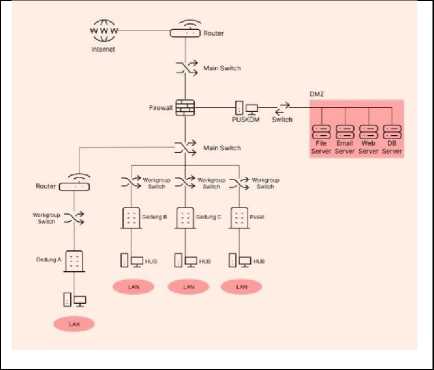
Figure 9.Proposed Disaster Recovery Topology
Phaseopportunities and solution is a phase to identify the results of the stages that have been carried out. This phase can be carried out by providing suggestions for several strategies that can be implemented based on the needs in managing the information system that will be created later. These strategies need to be considered to create an information system that has minimal risk of failure. Some of these strategies are as follows:
-
1) Create a database that has the appropriate capacity for school needs so that it can be developed in the future.
-
2) Use software that has a good license and is widely used to minimize the risk of inspection.
-
3) Expanding the network coverage area using cables to minimize costs and security risks of data theft from parties outside the school area.
-
4) Using existing computers with specifications that match the server to minimize costs.
-
5) Designing good information technology management by compiling work procedures and SOPs for managing information technology.
The solutions that can be provided in designing the architecture of this academic information system are as follows:
-
1) Designing academic Information System Applications according to needs
-
2) Implementation of an appropriate Academic Information System
-
3) Carrying out Human Resources development
Phasemigration planning is the phase where moving from the old system to the new system so that good design goals are achieved. This is done by identifying existing problems in the system to be built and developed. Some of the steps taken in this phase are as follows.
-
1) Identifying the types and types of data in the database moved to the new database, for migration obstacles and database characteristics.
-
2) Identify old software so that it is compatible with the latest system.
-
3) Identify computer specifications fromclient, data center and servers that will be used in the information system with the required criteria.
-
4) Carry out risk analysis that will occur to carry out the transfer or migration process such as dataerror, invalid, lost data and so on.
At this stage, migration of the application model must also be carried out in a good and sequenced manner according to the activities carried out. The applications related to academic information systems are grouped as follows.
Table 4.Application Model Implementation
|
No. |
Application Model |
Application Code |
|
1 |
PPDB Application Registration |
A-1.1 |
|
PPDB Scheduling |
A-1.2 | |
|
Management of PPDB selection scores |
A-1.3 | |
|
Making PPDB reports |
A-1.4 | |
|
2 |
Student data management |
A-2.1 |
|
Homeroom teacher |
A-2.2 | |
|
schedule of subjects |
A-2.3 | |
|
Absence/attendance list |
A-2.4 | |
|
Value management |
A-2.5 | |
|
3 |
Management of graduation requirements |
A-3.1 |
|
Degree making |
A-3.2 | |
|
Breakup management |
A-3.3 | |
|
4 |
Data management |
A-4.1 |
|
Teacher recapitulation reporting |
A-4.2 | |
|
Recording of teacher ranks |
A-4.3 | |
|
Rank report |
A-4.4 | |
|
5 |
Asset inventory application |
A-5.1 |
|
Asset procurement management |
A-5.2 | |
|
Making asset reports |
A-5.3 | |
|
6 |
Financial planning |
A-6.1 |
|
Preparation of financial reports |
A-6.5 |
5 Conclusion
Based on the research results, it can be concluded that there are proposals for business architecture using the TOGAF ADM framework, which can optimize business processes in designing School Academic Information Systems. The main analysis is carried out on business processes in schools in the form of designvalue chain to find out the main activities and supporting activities. Knowing the main activities in the initial business process is the initial TOGAF framework stage as an architectural design proposalenterprise. Designing an academic information system using TOGAF produces a design that suits the school's academic needs, namely a list of applications that will be prepared at the system development stage, so that an enterprise architecture is built as a reference for the school to implement an Academic Information System using TOGAF.
References
-
[1] Basir, Azhar, Abdul Fadlil, and Imam Riadi. 2019. “Enterprise Architecture Planning Sistem Informasi Akademik Dengan TOGAF ADM.” J-SAKTI (Jurnal Sains Komputer dan Informatika) 3(1): 1.
-
[2] Fitriana, Rika, and Muhammad Bakri. 2019. “Perancangan Arsitektur Sistem Informasi Akademik Menggunakan the Open Group Arsitekture Framework (Togaf).” Jurnal Tekno Kompak 13(1): 24.
-
[3] V. Soraya And W. S. Sari, “Perancangan Enterprise Architecture Sistem Informasi Dengan Menggunakan Framework TOGAF ADM Pada CV. Garam Cemerlang,” JOINS (Journal Inf. Syst., Vol. 4, No. 2, Pp. 148–156, 2019, Doi: 10.33633/Joins.V4i2.3054.
-
[4] Z. Rifai, T. Bratakusuma, And R. Arvianti, “Perencanaan Arsitektur Enterprise Desa Dengan Kerangka Kerja TOGAF ADM,” J. Sisfokom (Sistem Inf. Dan Komputer), Vol. 9, No. 2, Pp. 177– 184, 2020, Doi: 10.32736/Sisfokom.V9i2.803.
-
[5] Bahri, S. (2021). Penerapan Zachman Framework Dalam Perancangan Sistem Informasi Manajemen Keuangan Sekolah. Jurnal Tekno Kompak, 15(1), 55.
https://doi.org/10.33365/jtk.v15i1.912
-
[6] A. Y. Andi Mardiana Paduppai, Wahyu Hardyanto, Agus Hermanto, “Pengembangan Sistem Informasi Manajemen,” Semin. Nas. Pascasarj. 2019, pp. 84–89, 2019.
-
[7] R. E. Pariama, “Enterprise Arsitektur Planning (EAP) Untuk Universitas Pattimura Menggunakan TOGAF ADM,” JATISI (Jurnal Tek. Inform. Dan Sist. Informasi), Vol. 7, No. 2, Pp. 277–288, 2020, Doi: 10.35957/Jatisi.V7i2.209.
-
[8] Zachman, J. A. “A Framework for Information Systems Architecture,” IBM Systems Journal, vol. 26, no. 3, 1987.
-
[9] R. Rosmiati, “Perencanaan Sistem Informasi Akademik Menggunakan Zachman Framework,” J. SAINTEKOM, vol. 7, no. 1, p. 13, 2017, doi: 10.33020/saintekom v7i1.18.
-
[10] N. Rizky, Fitroh, and A. F. Firmansyah, “PERENCANAAN ARSITEKTUR ENTERPRISE MENGGUNAKAN TOGAF ADM VERSI 9 (Studi Kasus: Bimbel Salemba Group),” J. Sist. Inf., vol. 10, no. 1, pp. 11–20, 2017.
-
[11] S. K, Pengembangan Rencana Induk Sistem Informasi. Bandung, 2009.
-
[12] A. K. Nalendra, W. W. Winarno, and A. Sunyoto, “Pemodelan Arsitektur Enterprise dengan TOGAF pada SMK Bhakti Mulia Pare,” Politek. sawunggali, vol. 5, no. 1, pp. 1–11, 2016.
-
[13] Lasimin, Kusrini, and E. T. Lutfi, “Enterprise Architecture Planning Manajemen Kampus di Stikesal-Irsyad Al-Islamiyyah Cilacap,” J. Penelit. dan Pengabdi. Kpd. Masy. UNSIQ, no. 3, pp. 219–228, 2016.
-
[14] Group, T.O. "The Open Group Architecture Framework (TOGAF 9.1) u.s.," 2011.
-
[15] Gundars, O. "Definition of Enterprise Architecture - Centric Models for the System Engineer," TASC, p. 8, 2001.
Discussion and feedback